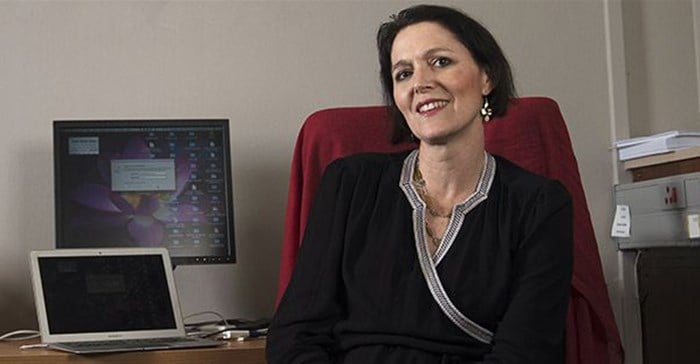A trial involving over 1,200 children from four different countries has found that the vast majority of them could be successfully treated for tuberculosis (TB) in four months instead of the usual six months.

Professor Anneke Hesseling
“The Shine trial is the first tuberculosis treatment-shortening randomised-controlled clinical trial in children. It’s a milestone. We’ve suspected for a long time that we are over-treating many children with TB, but now have clear, pragmatic evidence to inform policy and clinical practice,” says Professor Anneke Hesseling of the Desmond Tutu TB Centre (DTTC) in the Faculty of Medicine and Health Sciences at Stellenbosch University.
Hesseling was part of the team reporting on the results of the Shine trial, which involved 1,204 children from Uganda, Zambia, India and South Africa, including 315 children in Cape Town at the DTTC.
Around 1.1-million children develop TB annually and approximately 205,000 die from it in any given year. Children and adolescents account for around 25% of TB cases in Africa. Despite this, treatment options have lagged behind those available to adults.
The Shine trial compared a shortened four-month treatment regimen with the standard six-month regimen, using the same medications, and showed that 93% of children with minimal TB were successfully treated, with no difference in outcome between the regimens.
'Minimal TB' requires a different treatment regimen
Hesseling explains that ‘minimal TB’ is TB that is not that severe. “It’s typically pulmonary TB with minimal changes in the lungs, no cavities, complications or dissemination of the TB bacilli. It also applies to mild TB outside the lung – typically lymph node disease. We used chest X-rays to look for standard patterns or features which we classify as not severe, and which doctors on site used to randomise children.”
Up to 50-60% of children with TB globally, as well as in South Africa, may have minimal TB. “This is not a small subgroup, but reflects the majority of children with TB. The results can therefore be generalised and can benefit many children.”
It’s important to treat all forms of TB, including minimal TB, rapidly and effectively, so that it does not progress to a more severe form of the disease, especially in young, immune-compromised or malnourished children.
“If you treat minimal disease rapidly with a shorter regimen, the disease does not progress, and the regimen cures children, so it’s rewarding to have such good outcomes in this trial,” says Hesseling.
The 315 children were recruited from 31 clinics and three hospitals in Cape Town in close collaboration with local health services.
“We had to recruit children before they started their TB treatment, so we had to get to them quickly. Most were young – below three years of age – typically what we see in terms of the TB burden. Most children were diagnosed clinically, based on chest X-rays, history and symptoms.”
Successfully recruiting and retaining these children show that it’s possible to do high-quality pragmatic TB clinical trials in children, and also to reduce the barriers to diagnosing and treating children with TB.
Shortened treatment will have an economic and societal impact, and also make a difference to the health services.
Children are not just small adults
“Traditional treatment approaches for childhood TB are extrapolated from adult studies. Most adults have more infectious TB than children do. Children usually have lower bacterial levels, which have now been proven to respond equally well to shorter treatment. It’s an approach tailored to the child and to the disease. It’s difficult to get a child to take antibiotics daily for six months. Reducing this by two months relieves the burden on families, caregivers and health services," she says.
Shine also included work on the pharmacokinetics, acceptability and palatability of the drugs. “The study used fixed-dose combinations taken whole, or dissolved in water. This is the first time these have been used in South Africa and they will become part of routine care," Hesseling says.
The World Health Organisation (WHO) is collecting evidence to inform their 2021 TB treatment guidelines, and it is expected that these results will inform the relevant guidelines.
“National TB programmes take their cue from the WHO for TB treatment guidelines. We will ensure that our results are rapidly disseminated to local and global programme partners, communities and other stakeholders, to prepare for policy changes and practical implementation.
“I think this will be welcomed in South Africa. It’s high-quality evidence that can be translated practically to treat children clinically. We are very grateful for our highly engaged TB programme in South Africa.
“For the DTTC this has been an amazing journey. We have built capacity to do large-scale TB-treatment trials; we have made inputs into key methodological aspects; and, we have strengthened relationships with health services and communities. Training around reading X-rays across all five sites in Africa and India has built confidence in the robustness of these processes," she says.






































